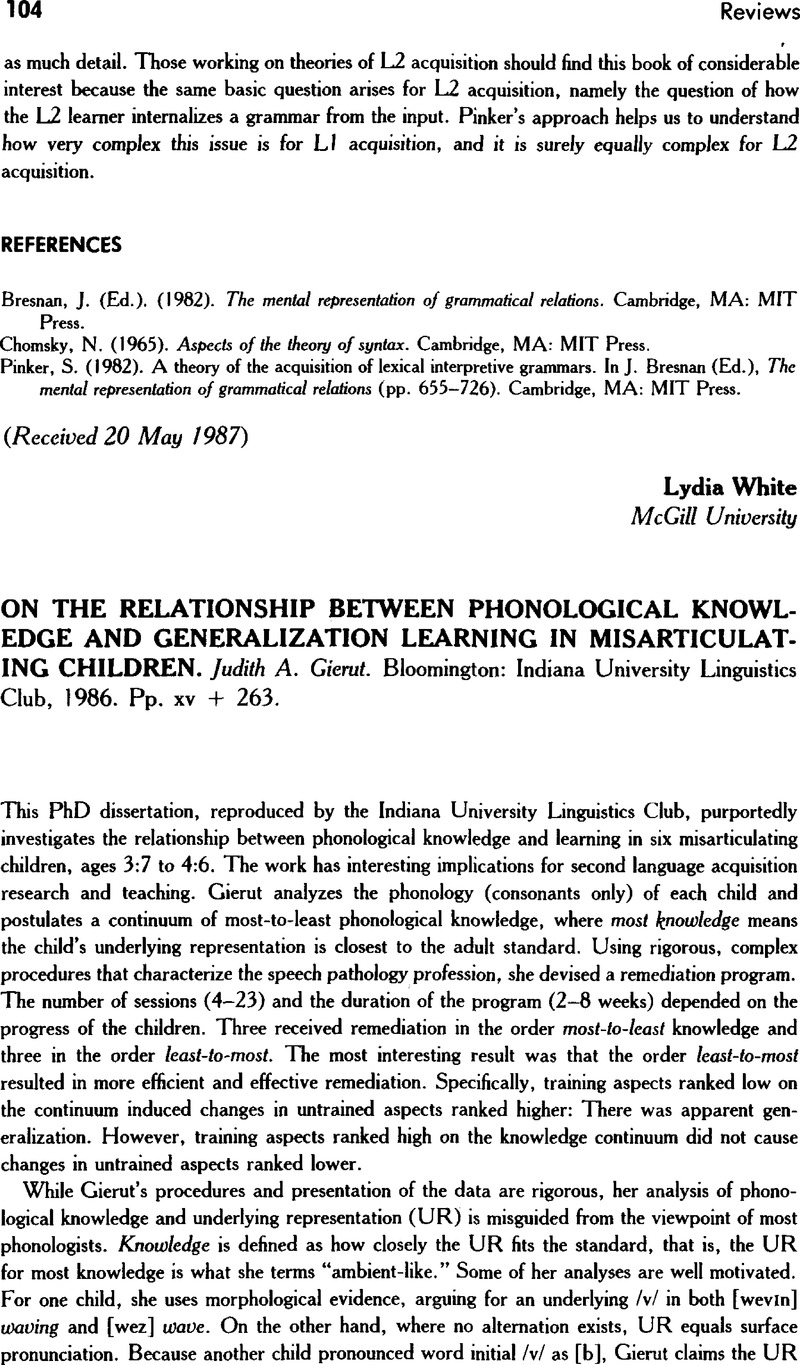No CrossRef data available.
Article contents
ON THE RELATIONSHIP BETWEEN PHONOLOGICAL KNOWLEDGE AND GENERALIZATION LEARNING IN MISARTICULATING CHILDREN. Judith A. Gierut. Bloomington: Indiana University Linguistics Club, 1986. Pp. xv + 263.
Published online by Cambridge University Press: 07 November 2008
Abstract
An abstract is not available for this content so a preview has been provided. Please use the Get access link above for information on how to access this content.

- Type
- Reviews
- Information
- Copyright
- Copyright © Cambridge University Press 1988
References
REFERENCES
Dinnsen, D. A., & Elbert, M. (1984). On the relationship between phonology and learning. In Elbert, M., Dinnsen, D. A., & Weismer, G. (Eds.), Phonological theory and the misarticulating child (ASHA Monographs No. 22, pp. 59–68). Rockville, MD: ASHA.Google Scholar
Eckman, F. R. (1977). Markedness and the contrastive analysis hypothesis. Language Learning, 27, 315–330.CrossRefGoogle Scholar
Eckman, F. R. (1985). Some theoretical and pedagogical implications of the markedness differential hypothesis. Studies in Second Language Acquisition, 7, 289–307.CrossRefGoogle Scholar
Elbert, M., Dinnsen, D. A., & Powell, T. W. (1984). On the prediction of phonologic generalization learning patterns. Journal of Speech and Hearing Disorders, 49, 309–317.CrossRefGoogle ScholarPubMed
Jakobson, R. (1968). Child language, aphasia, and phonological universals (Keiler, A. R., Trans.). The Hague: Mouton. (Original work published 1941 ).CrossRefGoogle Scholar




